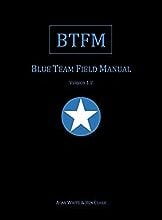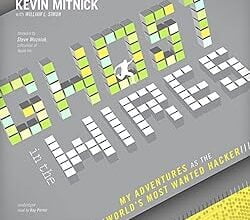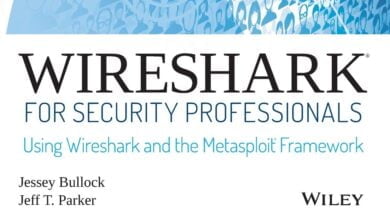Web Application Security: Exploitation and Countermeasures for Modern Web Applications
by Andrew Hoffman

Cracking the Code: A Comprehensive Look at Modern Web App Security
Taking Cybersecurity to the Next Level with Andrew Hoffman’s “Web Application Security”
Rating: 4.6/5
Hey, all you aspiring bug bounty hunters and cyber wizards! Ready to level up your web security skills? We dove into Andrew Hoffman’s Web Application Security: Exploitation and Countermeasures for Modern Web Applications and gave it a well-deserved 4.6/5 rating. Here’s why this book is a game-changer for anyone ready to deepen their cybersecurity chops.
Striking the Perfect Balance: Theory Meets Practice
The first powerhouse element of this book is the seamless blend of theory and hands-on application. Hoffman delves into notorious vulnerabilities like cross-site scripting (XSS) and SQL injection. But he doesn’t stop at definitions. He breaks down the anatomy of these threats, showing you real code snippets to illustrate how hackers exploit such vulnerabilities—and how you can protect against them. As Hoffman eloquently puts it, “Each security vulnerability is a journey. Understanding its path and destination leads to a robust defense.”
The Spotlight on Emerging Threats
Modern web development frameworks and languages come with their own set of security issues. Hoffman shines a light on these areas by discussing concerns around new technologies like APIs and Single Page Applications (SPAs). He explores unique security considerations of modern technologies like React and Angular, keeping you ahead of the curve in a rapidly evolving landscape.
Learn by Doing: Tutorial-like Walkthroughs
But wait, there’s more! Hoffman knows that telling isn’t teaching. The book is replete with step-by-step walkthroughs on various tools and strategies for hacking and counter-hacking. Ever wondered how to use Burp Suite to test vulnerabilities? Hoffman guides you through it. Curious about fuzzing? He’s got you covered. He advocates for experiential learning, saying, “The best way to understand a vulnerability is to exploit it—in a controlled environment, of course.”
Deep Dive into Session Hijacking
One of the standout sections of the book focuses on the perilous world of session hijacking. Hoffman walks readers through how attackers can exploit unprotected sessions to impersonate legitimate users. Using practical demonstrations and live examples, he shows how attackers can sniff unprotected session tokens over a network and use them to gain unauthorized access to web applications. Hoffman stresses the necessity of implementing secure session management techniques, recommending strategies like using HTTPS throughout the application and regularly rotating session identifiers.
The Nitty-Gritty of Content Security Policy (CSP)
Another example worth mentioning is the book’s exploration of Content Security Policy (CSP). With the proliferation of complex client-side scripts in modern web applications, Cross-Site Scripting (XSS) has become increasingly prevalent. Hoffman educates the reader on implementing an effective CSP as a defensive measure against XSS. He walks you through setting up a CSP header, explaining how it works to restrict the types of content that can be executed by a web application. By the end of this section, you’ll know how to define a robust CSP policy, thereby drastically reducing your application’s vulnerability to XSS attacks.
The Insider Scoop: Deep Dive into CSRF and OAuth 2.0
You may be wondering, “Is that all?” Not by a long shot. Let’s zoom into a fascinating section in Hoffman’s guide: The details on Cross-Site Request Forgery (CSRF) and OAuth 2.0. Not only does he explain these complex topics, but he also takes you on a tour of real-world cases where poor CSRF and OAuth 2.0 implementations have led to disastrous outcomes. This chapter alone could serve as its own mini-course on web security!
Room for Improvement: Shortcomings and Limitations
Now, let’s switch gears and talk about what could be better. While Hoffman does an outstanding job of deep-diving into the world of web security, this is not a 101 guide. If you’re an absolute beginner, be prepared for some heavy lifting right out of the gate.
Also, although the book does offer practical, hands-on exercises, the addition of more real-world bug bounty scenarios would make the book even more comprehensive and valuable for aspiring bug bounty hunters.
Leveling Up: The Perfect Guide for Intermediate Learners
So, who is this book for? If you’ve surpassed the beginner stage and are swimming in the intermediate pool of web application security, this book is your lifeguard. It fills the knowledge gap, taking you from ‘competent’ to ‘proficient’ by offering a wide range of intermediate to advanced topics.
Final Thoughts: A Roadmap for Your Web Security Journey
In a nutshell, Web Application Security: Exploitation and Countermeasures for Modern Web Applications by Andrew Hoffman is a must-read. It offers a deep dive into modern web vulnerabilities while balancing them with countermeasures and hands-on tutorials. Its shortcomings are minor and easily overshadowed by the wealth of knowledge it provides. As Hoffman reminds us, “Security is a journey, not a destination.” And his book? Well, it’s your detailed roadmap.
So, cyber warriors, it’s time to pack your bags for an exciting journey through the intricate labyrinth of web security. As you set forth, remember the best way to predict your future is to create it—and this book offers you all the tools to do just that.




